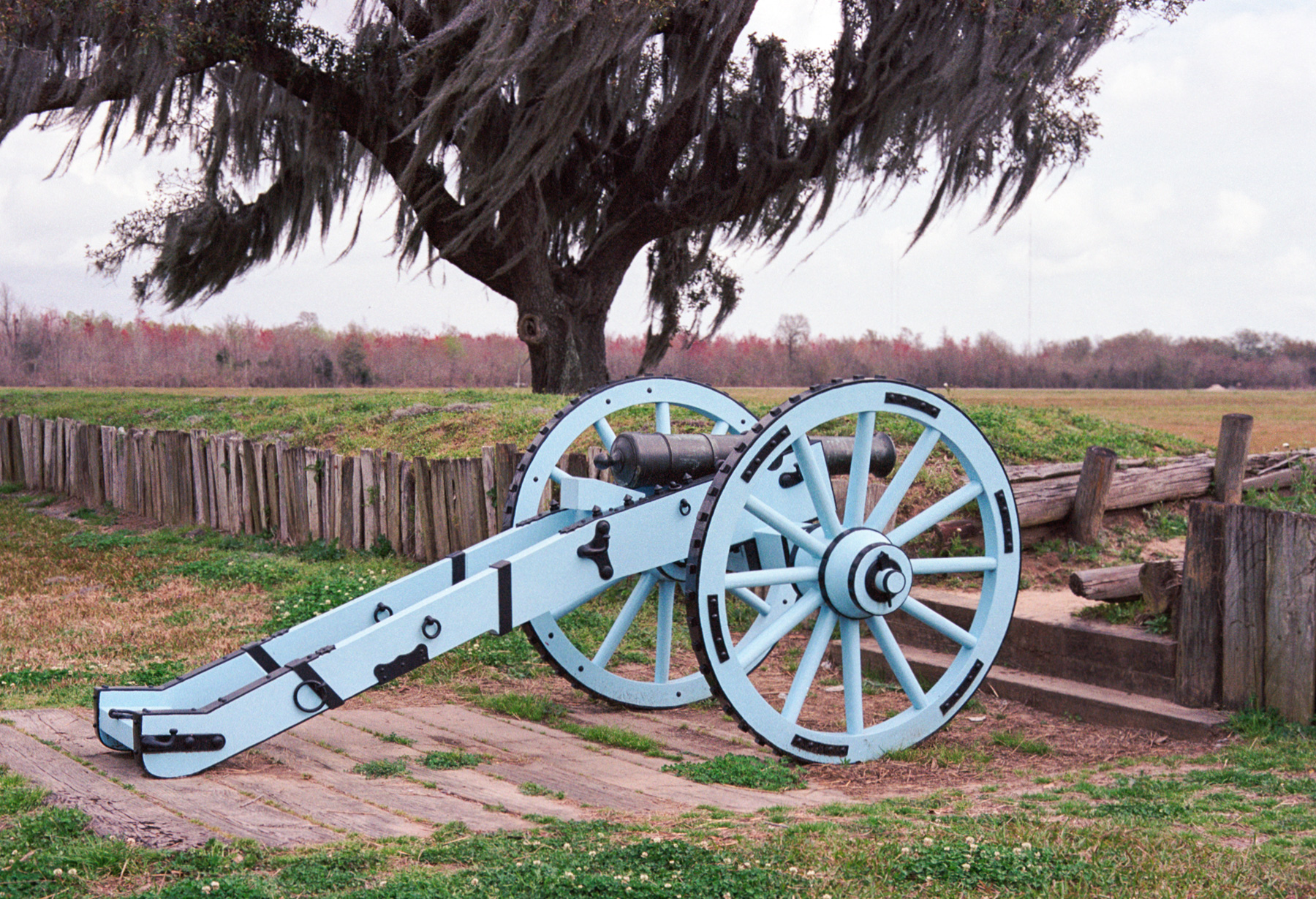Chalmette Battlefield

The Battle of New Orleans
In late 1814, the English launched the Gulf Campaign whose ultimate prize was to be the city of New Orleans and, perhaps, eventual control over the Louisiana Territory. The New Orleans portion of the campaign began with the Battle of Lake Bourne on December 14, 1814. Colonel Andrew Jackson led the US forces in the defense of the important Mississippi port city.
In addition to the Army, marines and navy seamen, Jackson had Mississippi, Tennesse and Kentucky militiamen; volunteers, including men of color; Indians from the Choctaw nation; as well as Baratarian pirates under the command of the notorious privateer Jean Lafitte.

Leica R4, Summicron 50mm f2, Fuji Superia 400
The land campaign began in late December. Jackson had the support of three warships in the Mississippi. The English forces were commanded by Major General Sir Edward Pakenham. Heavy bombardment from English guns quickly disabled the US ships.

The battle itself was incredibly short in duration and high in casualties. The British assault and American defense lasted approximately 30 minutes. There is some disagreement on actual number of dead and wounded (several hundred British soldiers feigned death only to jump up once the Americans had gained control of the field). The US forces suffered somewhere in the range of 30 casualties, while the British, whose poorly executed assault had taken its toll, had approximately 2000 casualties and counted Pakenham and his second-in-command Major General Samuel Gibbs among their dead.

Smithsonian American Art Museum
The Treaty of Ghent
It is the great irony of the Battle of New Orleans that the War of 1812 had, in fact, ended 18 days prior. The Treaty of Ghent was signed on Christmas Eve 1814, but the news took time to reach North America.

The Malus-Beauregard House
At the edge of the battlefield adjacent to the river levee sits the Malus-Beauregard House, also known as Rene Beauregard House. The structure is an an example of French-Louisiana architecture in the neo-classical style. This 1830s porticoed mansion, overlooks the Battle of New Orleans historic site.
The house bears the names of its first and last owners. The property was originally part of the Chalmette Plantation. The plantation was subdivided 1832 and purchased by Alexandrew Baron. The parcel adjacent to the river measured one arpent* wide and 17 arpents deep. Baron purchased the land for his mother-in-law, the Widow Malus, née Madeleline Panneteir. The house, originally known as “Bueno Retiro,” now standing on the site was constructed in 1833 or 1834.
Judge Rene’ Beauregard purchased the property in 1880. The family later in 1904 sold the property along with house to the New Orleans Terminal Company. In 1949 the site was purchased by The National Park Service.
Jean Lafitte National Historical Park and Preserve
8606 West St. Bernard Highway, Chalmette
*An arpent is an historic French unite of linear measure equally approximately 190 ft.



Leave a Reply